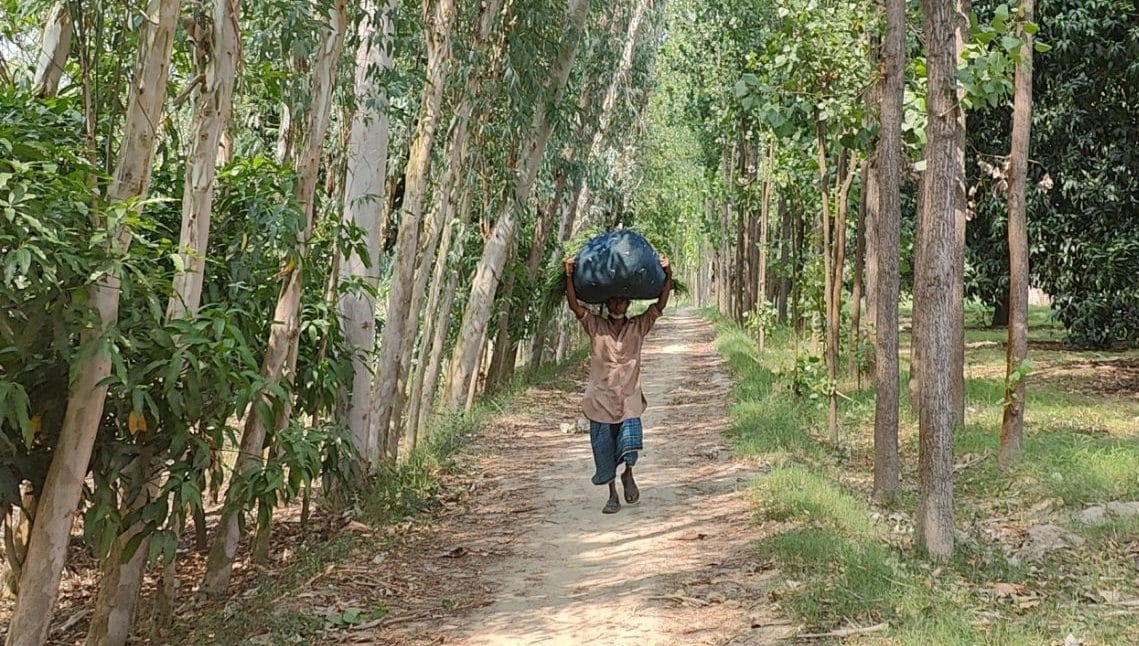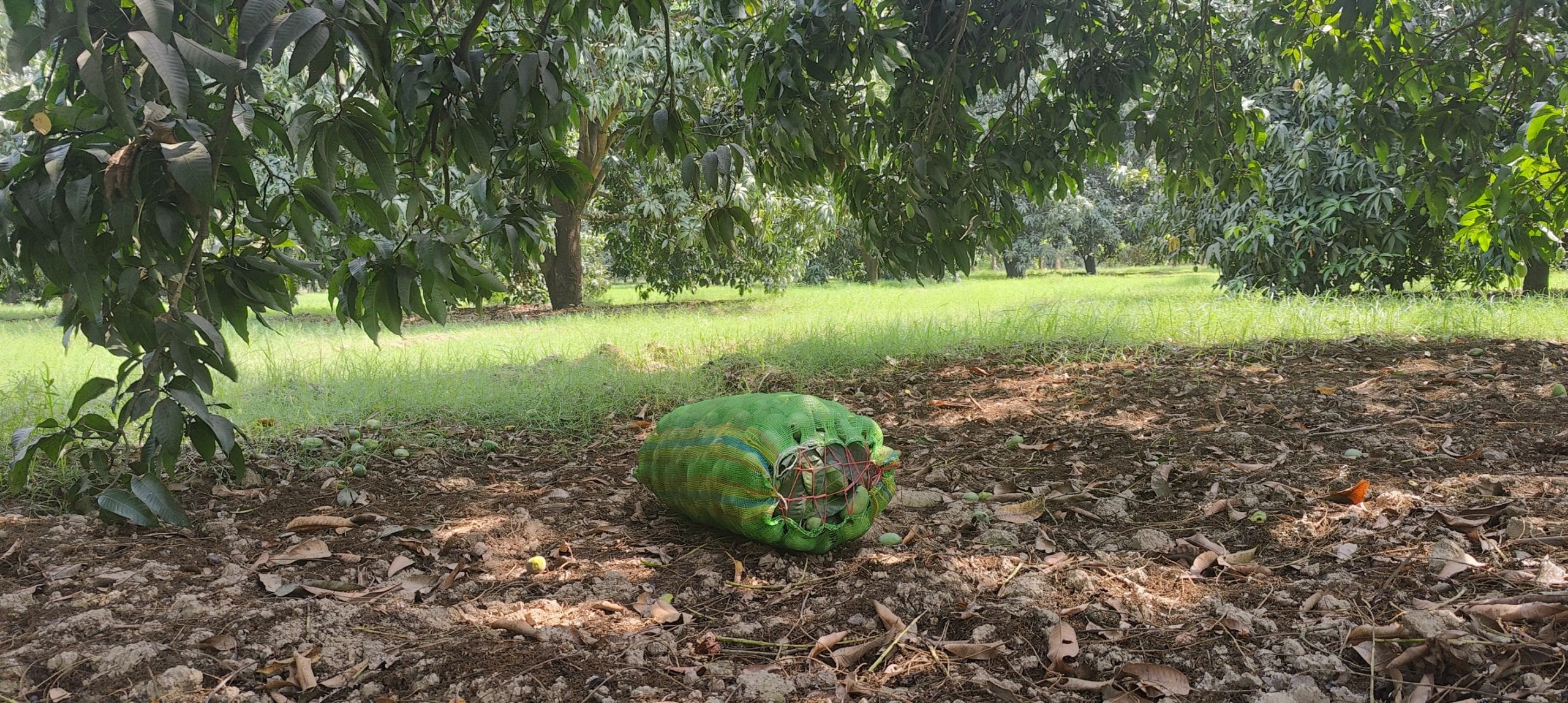Saharanpur: Fifty-six-year-old mango farmer Rao Arshad surveyed what was left of his orchard the morning after a heavy unseasonal storm hit Saharanpur. Trees were uprooted. Mangoes were laid waste on the ground, and those that survived were speckled and dented. “None of them can be exported now,” he said.
For nearly a decade, Arshad has ensured that the best yield from his orchards is carefully plucked, packed, and shipped to be exported across the United States, United Arab Emirates, and United Kingdom. The mangoes have to be picture perfect. Any dents, marks, or inconsistencies in colour are enough for an entire consignment to be rejected. He will only know the full extent of the loss these rains have caused him after harvest, when the counting begins.
“Mangoes need uninterrupted heat to ripen, which has not happened this year,” Arshad said, as he pointed to trees laden with green mangoes, yet to mature into shades of yellow.

Nearly 100 acres of his orchards are filled with mango trees of different varieties. The air is redolent with the sweet scent of Chausa and Dashehari mangoes, which will take another 15 days to ripen. But according to Arshad, they make up for only 60 per cent of his entire produce.
Northwest India, including Uttar Pradesh, is home to a range of Indian mango varieties—Chausa, Dashehari, Langra, Safeda, and Fazli. But this year, erratic weather has disrupted their growth. Harsh summer days have been broken by frequent spells of rain and thunderstorms. This year, May has been exceptionally cool for a region that’s known for its scorching summers.
At least four major western disturbances—weather systems responsible for non-monsoonal rain and snow in Northwest India—have hit the region, keeping the temperatures at least four to five degrees Celsius below the season’s average.
Such intermittent spells of rain and hail have brought relief from heatwaves, but spell bad news for mango farmers.
Also read:
A bad season
Mohammad Rehman, a contractor at Arshad’s orchards, has been tending to mango trees since he was a teenager. He is 52 now.
He examines the mango stems with concern. Normally, each produces six to eight flowers but this time, only two to three buds remain.

“Each flower would ideally grow into a fruit. But the hailstorm damaged them before they could become fruits,” Rehman said, holding out a barren stem.
The storms have significantly impacted the quality of mangoes, too. The force with which the hailstones have hit them has resulted in dents and black marks on their fleshy bodies.
According to the Agricultural and Processed Food Products Export Development Authority (APEDA), which falls under the Union Ministry of Commerce and Industry, India is home to nearly 1,000 varieties of mangoes. As of 2023-2024, UP leads the country’s mango production – cultivating 25.76 per cent of the total output. Andhra Pradesh, Bihar, Karnataka, Telangana, and West Bengal are the other big producers.
In 2023-24, India exported 32,104.09 metric tonnes of fresh mangoes, worth over $60.14 million. The primary consumers of India’s mangoes are the UAE, UK, US, Kuwait, and Qatar.
According to a senior commerce ministry official who spoke to ThePrint, the government is not worried about the quality of mangoes; it is more concerned about how this unpredictable weather is affecting their quantity.
“This season has been bad for mangoes across the country. We are providing as much assistance to the farmers as possible. We will know the actual impact when the produce from the UP belt starts coming in,” the official said.
Also read:
Heat is key
Temperature is crucial for the production of the ‘King of Fruits’. According to farmers, mangoes grow best around 27 degrees Celsius. But even in higher heat—such as in Northwest India between April and June—the fruits tend to thrive.
Intermittent summer showers and hailstorms, combined with an overall increase in humidity levels and a dip in temperature, have been detrimental to the overall health of mango trees this year. Crops have now become more susceptible to pests and diseases.
This vulnerability to pest attacks pushes farmers to use pesticides, which negatively impacts fruit quality, said T Damodaran, director of the Indian Council of Agricultural Research’s (ICAR) Central Institute of Subtropical Horticulture.
After rains, stressed Damodaran, populations of fruit flies and thrips that feed on mangoes multiply. Moisture in the air and soil creates the perfect breeding ground for them.
“Uninterrupted heat means the fruit would be naturally sweeter. When the plant does not get the ideal conditions, farmers usually resort to artificial means to ripen the fruit,” he said.
Also read:
Alphonso produce hit
UP is not the only state that is bearing the brunt of weather changes this year. In the Konkan coast of Maharashtra, Alphonso production has also taken a hit.
According to the Mumbai Agricultural Produce Market Committee, the first flowering of Alphonso, which typically begins in February, failed this season. This resulted in a production decline of approximately 35-50 per cent.
Krishna Wadnekar, a member of the Alphonso Mango Traders’ Association, said that intense pre-monsoon showers have led to early plucking of mangoes in many pockets.
“We tried to save some produce and cultivated some mangoes early. Those are the ones that are coming to the markets now,” Wadnekar said.
In UP, Arshad has started covering baby mangoes with cloth bags to protect them from nature’s wrath. “It requires extra investment and effort, but what else do we do?”
Raw mangoes damaged by weather change aren’t going to waste, though. Arshad ensures that they are sold to local vendors to make pickles.

“It doesn’t fetch a lot, but it is better than nothing. We are able to cover at least some of our costs,” he said.
But the problem can’t be solved without active government intervention.
Senior commerce ministry officials have said that the government is already assisting farmers. It has marked major production zones and is setting up pack houses—where mangoes are processed post-harvest to ensure quality and freshness before export and distribution.
The government has also arranged for hot water and vapour heat treatments, along with irradiation facilities, which help eliminate post-harvest diseases and pests. But farmers need more.
“Post-harvest facilities will only come to use when the fruits survive till that point,” said Arshad, with a smile masking his concern.
(Edited by Zoya Bhatti)






